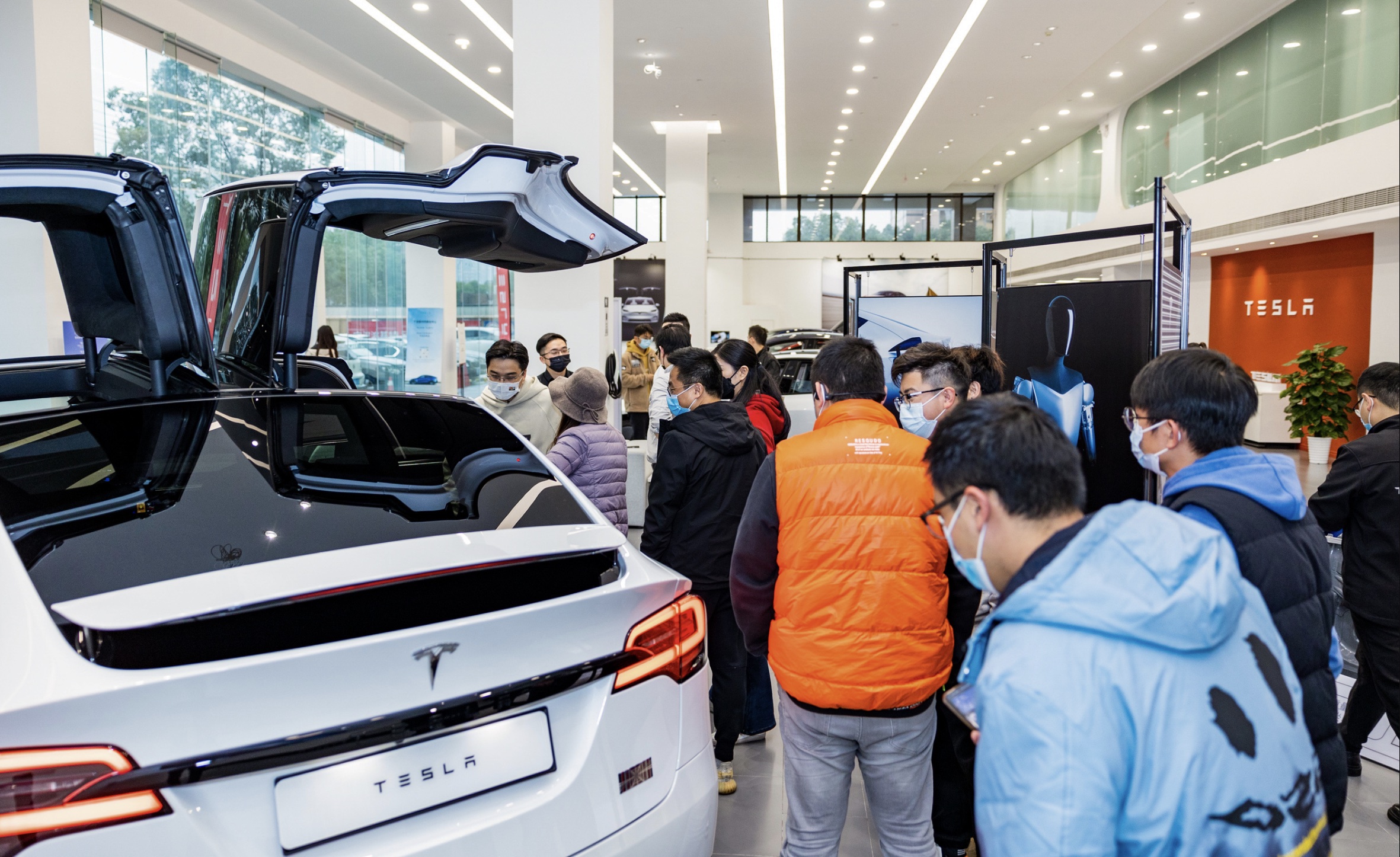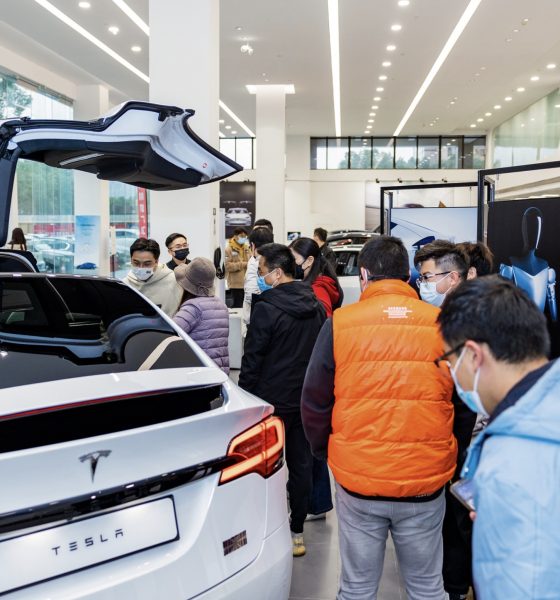Deloitte, a leading professional services network, has published polling and analysis on the hurdles ahead of EV adoption globally.
Deloitte condensed its findings well in one of the first sentences of its analysis, “interest in electric vehicles grows, but worries about price, range, and charging time remain.” This survey is part of a series that Deloitte has conducted annually for over a decade now called the “Global Automotive Consumer Study.” In this year’s publication, the focus was on electric vehicles.
The first surprising piece of data is how much the United States lags in interest in electric vehicles. Deloitte found that only 8% of respondents were confident that EV was their next vehicle. However, this is an outlier compared to other recent surveys conducted in the U.S. Out of the nations polled by Deloitte, China led in interest in EVs, with over a quarter of respondents saying that their next vehicle would be electric.
Less surprising were the reasons respondents were interested in purchasing an EV. Despite the near-constant messaging from governments, media sites, and automakers alike, the cost of ownership was by far the most significant attractor for consumers. Significantly more swaying than concerns about the environment or concerns about personal health.
Shortly thereafter, Deloitte highlighted the top concerns of consumers if they were to buy an electric vehicle, and unsurprisingly, affordability was the number 1 concern across the board. In the U.S., other top concerns included driving range, charging time, public charging availability, and at-home charging availability. Globally, other than concerns regarding the upfront cost of the EV, charging time, driving range, and charging availability were also top concerns.
Only one country had responses that dramatically differed from the norm, China. Chinese respondents not only stated that the superior driving experience was the top attractor to EVs, but their biggest concern was safety regarding battery technology.
For those who live or have purchased an EV in the U.S., these results should be no surprise. The foremost EV seller in America, Tesla, no longer sells a vehicle below $40,000, and the vast majority of Tesla vehicles sell for much more. To make the problem even worse, traditional budget brands have not yet been able to bring down their prices to parity with gas offerings.
Ford’s F150 Lighting sells for thousands more than its gas counterpart. The first-ever Toyota EV offering, the BZ4X, is multiple times the cost of a base RAV4. And while the Chevy Bolt has become popular specifically for its affordability, it remains far more expensive than gas vehicles in its class.
The other area where EVs aren’t meeting customer expectations is in the driving range they are capable of. An astounding 19% of respondents stated that they would want a vehicle with a minimum range of 600 miles, while the plurality of respondents expected more than 300 miles of range. And while many may believe that these expectations are unfairly high compared to gas vehicles, perhaps this is also a messaging problem that automakers must solve in the coming year.
These results do come with the caveat that they varied quite considerably from market to market. Noticeably, Southeast Asian respondents needed the least amount of range, while respondents from Europe and the U.S. stated they needed the most.
On a more positive note, Deloitte was able to find areas where advancement in EV technology has finally been able to meet consumer expectations. The vast majority of respondents stated that they were willing to wait either between 10-20min or 20-40min for a complete charge, and over 40% of respondents stated they would be willing to wait a max of 20min.
While these expectations are high, they are finally within reach of many popular vehicles. Hyundai’s fastest charging vehicles will charge from 10-80% in 18min, while Teslas that plug into the newest generation Supercharger are charging to 80% in a similar timeframe.
For someone who spends their time immersed in the world of electric vehicles, such as myself, it can come across as a culture shock hearing about the concerns and motivators that are affecting the purchasing choices of the people that live around me. Still, perhaps it is an important exercise to step away from the keyboard and see what others really think. And for manufacturers, data like that collected by Deloitte can be a powerful tool showing where consumer attention is and what is affecting how they spend their money.
What do you think of the article? Do you have any comments, questions, or concerns? Shoot me an email at william@teslarati.com. You can also reach me on Twitter @WilliamWritin. If you have news tips, email us at tips@teslarati.com!

News
Nvidia CEO Jensen Huang explains difference between Tesla FSD and Alpamayo
“Tesla’s FSD stack is completely world-class,” the Nvidia CEO said.

NVIDIA CEO Jensen Huang has offered high praise for Tesla’s Full Self-Driving (FSD) system during a Q&A at CES 2026, calling it “world-class” and “state-of-the-art” in design, training, and performance.
More importantly, he also shared some insights about the key differences between FSD and Nvidia’s recently announced Alpamayo system.
Jensen Huang’s praise for Tesla FSD
Nvidia made headlines at CES following its announcement of Alpamayo, which uses artificial intelligence to accelerate the development of autonomous driving solutions. Due to its focus on AI, many started speculating that Alpamayo would be a direct rival to FSD. This was somewhat addressed by Elon Musk, who predicted that “they will find that it’s easy to get to 99% and then super hard to solve the long tail of the distribution.”
During his Q&A, Nvidia CEO Jensen Huang was asked about the difference between FSD and Alpamayo. His response was extensive:
“Tesla’s FSD stack is completely world-class. They’ve been working on it for quite some time. It’s world-class not only in the number of miles it’s accumulated, but in the way it’s designed, the way they do training, data collection, curation, synthetic data generation, and all of their simulation technologies.
“Of course, the latest generation is end-to-end Full Self-Driving—meaning it’s one large model trained end to end. And so… Elon’s AD system is, in every way, 100% state-of-the-art. I’m really quite impressed by the technology. I have it, and I drive it in our house, and it works incredibly well,” the Nvidia CEO said.
Nvidia’s platform approach vs Tesla’s integration
Huang also stated that Nvidia’s Alpamayo system was built around a fundamentally different philosophy from Tesla’s. Rather than developing self-driving cars itself, Nvidia supplies the full autonomous technology stack for other companies to use.
“Nvidia doesn’t build self-driving cars. We build the full stack so others can,” Huang said, explaining that Nvidia provides separate systems for training, simulation, and in-vehicle computing, all supported by shared software.
He added that customers can adopt as much or as little of the platform as they need, noting that Nvidia works across the industry, including with Tesla on training systems and companies like Waymo, XPeng, and Nuro on vehicle computing.
“So our system is really quite pervasive because we’re a technology platform provider. That’s the primary difference. There’s no question in our mind that, of the billion cars on the road today, in another 10 years’ time, hundreds of millions of them will have great autonomous capability. This is likely one of the largest, fastest-growing technology industries over the next decade.”
He also emphasized Nvidia’s open approach, saying the company open-sources its models and helps partners train their own systems. “We’re not a self-driving car company. We’re enabling the autonomous industry,” Huang said.
Elon Musk
Elon Musk confirms xAI’s purchase of five 380 MW natural gas turbines
The deal, which was confirmed by Musk on X, highlights xAI’s effort to aggressively scale its operations.

xAI, Elon Musk’s artificial intelligence startup, has purchased five additional 380 MW natural gas turbines from South Korea’s Doosan Enerbility to power its growing supercomputer clusters.
The deal, which was confirmed by Musk on X, highlights xAI’s effort to aggressively scale its operations.
xAI’s turbine deal details
News of xAI’s new turbines was shared on social media platform X, with user @SemiAnalysis_ stating that the turbines were produced by South Korea’s Doosan Enerbility. As noted in an Asian Business Daily report, Doosan Enerbility announced last October that it signed a contract to supply two 380 MW gas turbines for a major U.S. tech company. Doosan later noted in December that it secured an order for three more 380 MW gas turbines.
As per the X user, the gas turbines would power an additional 600,000+ GB200 NVL72 equivalent size cluster. This should make xAI’s facilities among the largest in the world. In a reply, Elon Musk confirmed that xAI did purchase the turbines. “True,” Musk wrote in a post on X.
xAI’s ambitions
Recent reports have indicated that xAI closed an upsized $20 billion Series E funding round, exceeding the initial $15 billion target to fuel rapid infrastructure scaling and AI product development. The funding, as per the AI startup, “will accelerate our world-leading infrastructure buildout, enable the rapid development and deployment of transformative AI products.”
The company also teased the rollout of its upcoming frontier AI model. “Looking ahead, Grok 5 is currently in training, and we are focused on launching innovative new consumer and enterprise products that harness the power of Grok, Colossus, and 𝕏 to transform how we live, work, and play,” xAI wrote in a post on its website.
Elon Musk
Elon Musk’s xAI closes upsized $20B Series E funding round
xAI announced the investment round in a post on its official website.

xAI has closed an upsized $20 billion Series E funding round, exceeding the initial $15 billion target to fuel rapid infrastructure scaling and AI product development.
xAI announced the investment round in a post on its official website.
A $20 billion Series E round
As noted by the artificial intelligence startup in its post, the Series E funding round attracted a diverse group of investors, including Valor Equity Partners, Stepstone Group, Fidelity Management & Research Company, Qatar Investment Authority, MGX, and Baron Capital Group, among others.
Strategic partners NVIDIA and Cisco Investments also continued support for building the world’s largest GPU clusters.
As xAI stated, “This financing will accelerate our world-leading infrastructure buildout, enable the rapid development and deployment of transformative AI products reaching billions of users, and fuel groundbreaking research advancing xAI’s core mission: Understanding the Universe.”
xAI’s core mission
Th Series E funding builds on xAI’s previous rounds, powering Grok advancements and massive compute expansions like the Memphis supercluster. The upsized demand reflects growing recognition of xAI’s potential in frontier AI.
xAI also highlighted several of its breakthroughs in 2025, from the buildout of Colossus I and II, which ended with over 1 million H100 GPU equivalents, and the rollout of the Grok 4 Series, Grok Voice, and Grok Imagine, among others. The company also confirmed that work is already underway to train the flagship large language model’s next iteration, Grok 5.
“Looking ahead, Grok 5 is currently in training, and we are focused on launching innovative new consumer and enterprise products that harness the power of Grok, Colossus, and 𝕏 to transform how we live, work, and play,” xAI wrote.










